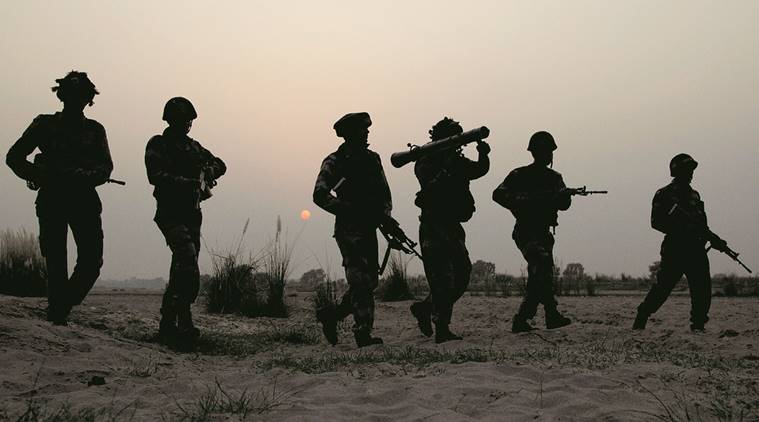An Indian Express report has cited eyewitness accounts of surgical strikes carried out by the army. Providing graphic accounts of the strikes, the report describes how bodies of those killed in clashes before dawn on September 29 were loaded onto trucks for secret burials.
The accounts provided by them confirm to Indian army’s claims of carrying out “successful surgical strikes” and refute Pakistan’s version. As reported, brief but intense firing took place after which the makeshift arrangements of the jihadists were destroyed and their bodies packed into Lorries. The number of casualties are thought o be around 38 to 50 which is a very small number and have caused little damage to the jihadist logistics and infrastructure.
This is the first time that details which had not been revealed by the government of both countries have been made available to the public, including details about locations targeted.
As claimed by the Indian Express, they contacted five eyewitnesses through their kin living on the Indian side of the LoC and questions were sent to them using a commercially available encrypted chat system. The eyewitnesses’ identities are being withheld for their safety at the request of their families.
Since Indian journalists do not have the access to the Pakistani side of the LoC, so the scenario could not be inspected by the Indian journalists. Two eyewitnesses from Dudhnial, a small hamlet some 4 km across the LoC from India’s nearest forward post, gave the most detailed account and reported of seeing a gutted building across the Al-Haawi bridge from the hamlet’s main bazaar, where a military outpost and a compound used by the Lashkar were seen.
Local residents narrated hearing loud explosions from across late at night across the Al-Haawi bridge. The eyewitness said, “People did not come out to see what was going on,” the eyewitness reported, “so did not see Indian soldiers but they gathered from the Lashkar people the next day that they had been attacked.”
Five, perhaps six, bodies were loaded on to a truck early next morning, and possibly transported to the nearest major Lashkar camp at Chalhana, across the Neelum river from Teetwal, on the Indian side of the LoC, the eyewitness said he was told by local residents.
Even though no official claim has been by the Indian Army on the number of deaths, but Director General of Military Operations Lieutenant General Ranbir Singh said the strikes caused “significant casualties” to “terrorists and those providing support to them.”
The eyewitness said that the Friday prayers at a Lashkar-affiliated mosque in Chalhana ended with a cleric vowing to avenge the deaths of the men killed the previous day. “The Lashkar men gathered there were blaming the Pak Army for failing to defend the border”, he said in one message, “and saying they would soon give India an answer it would never forget”.
The strike caught the jihadists by surprise and an official said, “They were basically sitting around thinking it was business as usual. Many of them would have died crossing the LoC anyway, when they hit our defences but this (the strikes) has made them feel unsafe one step back in their journeys”.
Among the areas targeted were, Leepa near Naugam, Khairati Bagh, Chowkibal and the Bangas bowl. The eyewitness said local residents said “three or four” Lashkar personnel were thought to have been killed in the raid, while others fled into the adjoining forests after the firing began.
The fighting appeared to have taken place near military camps along the Katha Nar stream that empties into the Neelum river just north of the town.
The Pakistan Army responded by locating jihadist launch-pads alongside its camps, thus minimising contact between local residents and groups like the Lashkar. However, the massive street violence in Kashmir has led to a surge in the visibility of jihadists across the Neelum valley.

















